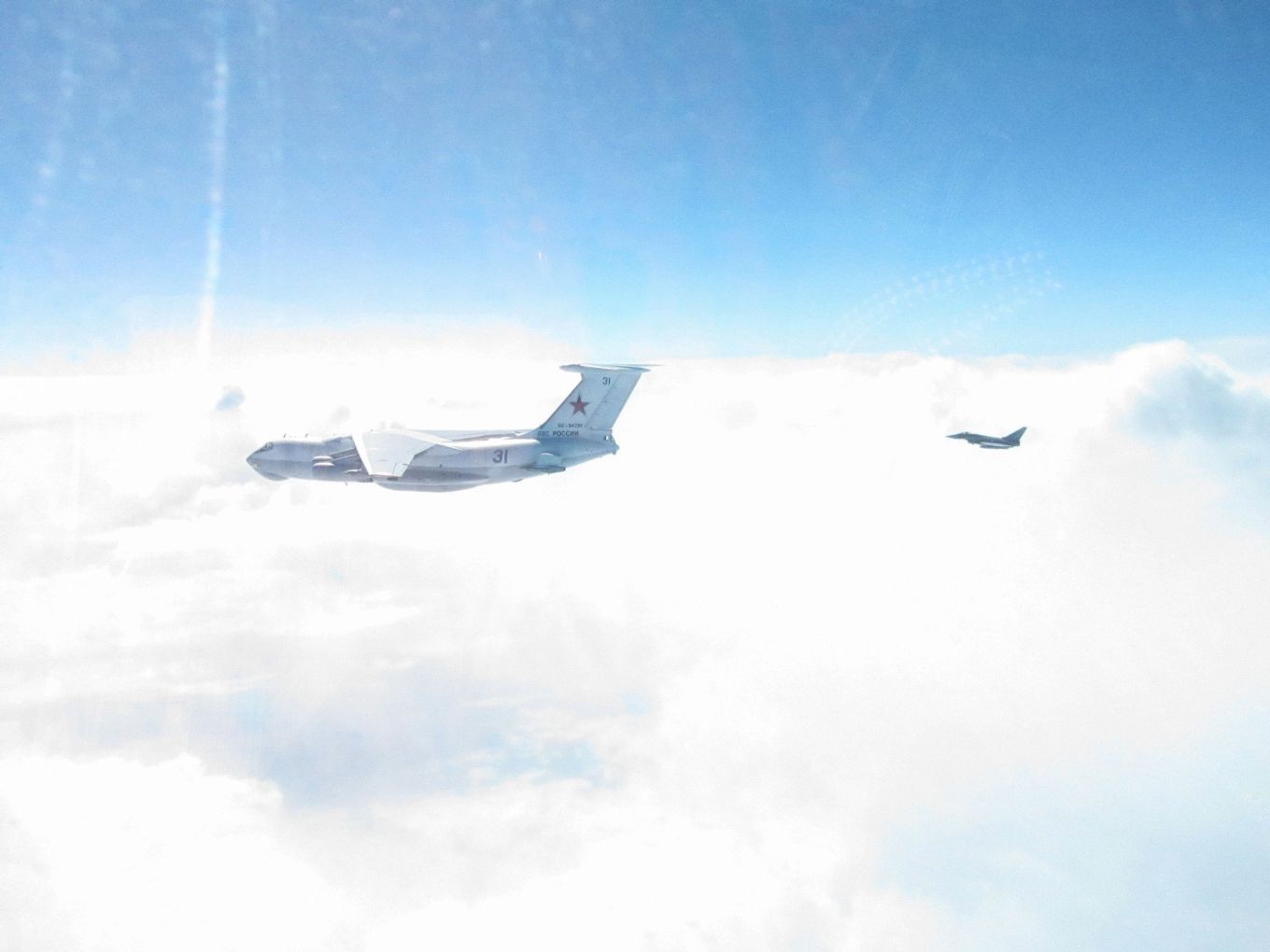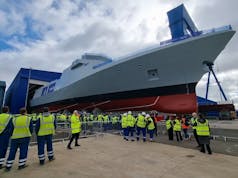Royal Air Force Typhoon fighter jets based in Lithuania have launched for the fifth time to intercept Russian aircraft off the Baltic coast.
The Royal Air Force say that the Typhoons from RAF Lossiemouth based 6 Squadron, intercepted a Russian IL-78 MIDAS Air to Air refuelling aircraft that was operating over the Baltic Sea and was a routine NATO Air Policing mission.
Wing Commander Stu Gwinnutt the commanding officer of the deployed 135 Expeditionary Air Wing, that is currently deployed at Siauliai air base in Lithuania conducting the NATO mission said in a news release:
“Today’s interception, though routine, is a continuing sign of why it is necessary to deploy the NATO Air Policing Mission here, to ensure that all air users in this region can conduct their activities in a safe and professional manner.”
The current NATO Baltic Air Policing mission sees the RAF working alongside a Spanish Air Force detachment at Siauliai Air Base in Lithuania and a French Air Force detachment at Amari Air Base in Estonia.

According to the Ministry of Defence:
“The UK operates in support of NATO to reassure our Allies and is a part of the wider UK NATO commitments in the region. These include leading the NATO Battlegroup deployed in Estonia and supplying troops to the US led Battle Group based in Poland as part of NATOs enhanced Forward Presence mission.”














No one loves this article George
Always wondered, do the Finns do much intercepting or dp they try not to provoke Russia? I know they train hard to repel/slow a land invasion
Id imagine the Finn’s Police their Airspace just the same as everybody else,i wouldnt consider that as a provocation.
It’s good training for the pilots but does anyone know the ROE? When would, if ever, a NATO plane fire on a Russian plane flying over international waters?
They will follow the same ROE as used with civilian aircraft. It also depends on the context, is the aircraft flying over the Ocean flying West away from land or flying toward a built up area?
Basically they will try to go through the guard channels via radio to get a response, if that fails they will try visual communications using placards. If that fails they will try to gauge why the crew are unresponsive by flying “close” to the cockpit. This is just in case the crew have succumbed to carbon monoxide poisoning or have been hijacked. If the crews are alert but are being deliberately unresponsive. The next course of action depends on where the aircraft is heading. If the aircraft is heading to open waters, the QRA will just escort it making sure all civilian air traffic are made aware of its location. If the aircraft is heading towards land, it will be treated as a threat. Firstly one of the two QRA aircraft will do a close flyby to get the crews attention and flash the underside of the aircraft to show it is armed. Whilst doing this the other aircraft will be towards the rear of the uncommunicative aircraft and will still be trying to reach the crew on guard. Again, if the aircraft is still unresponsive, the QRA aircraft are authorized to fire warning shots and try to divert the aircraft away from land.
If the aircraft is unresponsive and steers back on to the original heading, the QRA aircraft will follow the directive following the 9/11 attack and make sure it doesn’t go any further! The QRA pilots will have been in constant communication with their ground controller. All communications will be recorded as well as taking video footage of the visual placards and the crews responses. This is clearly a worse case scenario. There have been many civilian airliners and small aircraft that have failed to respond to radio communications not shot down. As the visual communication usually establishes the aircraft has a radio communications fault. These aircraft are then “sheparded” to Stansted airport.
“These aircraft are then “sheparded” to Stansted airport.
Where they are parked in a very specific spot.
Correct